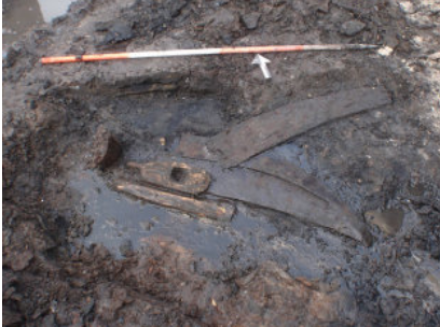History
During excavations preceding construction works in Domburg (Zeeland, the Netherlands) in 2010, three planks of a ship's hull were found. The whole excavation centered around a number of houses and yards, and the planks were found in one of the yards. They were later identified as a fragment of a ship.
The planks were oak wood and formed part of a clinker built hull. Though they were loose, it was clear that they were originally joined together with treenails. Dendrochronological analysis of the wood provided a logging date of 769 CE. The providence of the would could also be established: the Anglo-Saxon trading post of Hemwic. Due to the extraordinary good conservation of the site, caulking was even found. It consisted of a certain type of moss that is found on large deciduous trees, earthen walls and chalk rocks.
Even though only a small part of the ship was found and not much can be said about its overall appearance, the present evidence did provide a very specific provenance, making this an interesting find.

Description
References
- A. Ufkes (2011).
Een archeologische opgraving in de vroegmiddeleeuwse ringwalburg van Domburg, gem. Veere (Z.
ARC Publicaties.